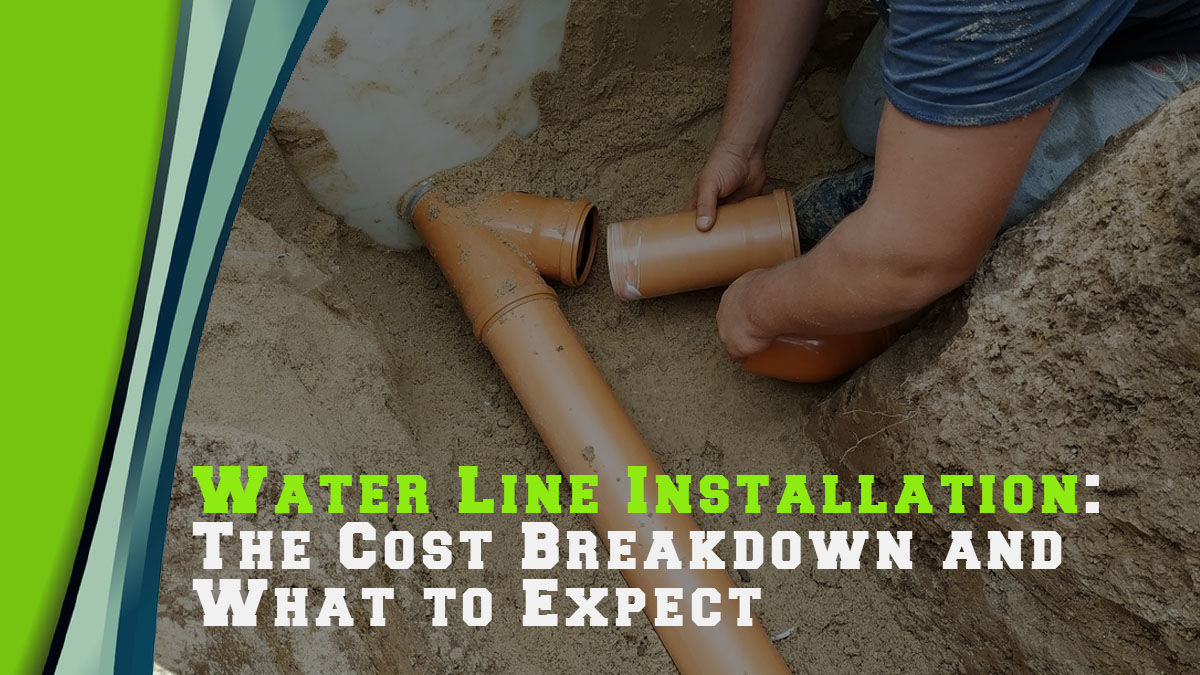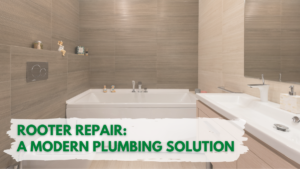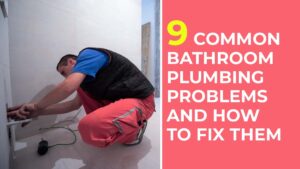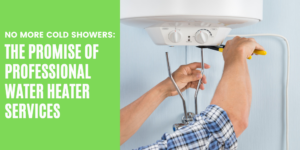Water Line Installation: The Cost Breakdown and What to Expect
Have you ever wondered about the cost breakdown and what to expect when embarking on this critical project? Water lines are the lifelines of our homes and businesses, ensuring a steady flow of this precious resource. But what factors influence the cost of installation or repair? And what can you anticipate during the process? This comprehensive guide will unravel the mysteries behind water line installation, giving you the insights you need to make informed decisions. Get ready to delve into the depths of water line projects and discover the cost breakdown and expectations that await you. Are you prepared to make a splash? Let’s dive in!
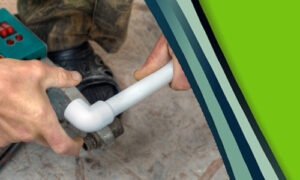
The Cost Breakdown of Water Line Installation
The cost of a water line installation can vary based on factors such as location, the length of the water line, and the type of materials used. Here’s a breakdown of the typical costs involved:
1. Material Costs
The cost of materials is a significant factor in a water line installation. The cost of the actual water line itself will depend on the type and quality of the material used. PVC pipes are usually cheaper than copper pipes but may need to be more durable. Other materials, such as polyethylene pipes, may be more expensive but offer better durability and resistance to environmental factors. In addition to the water line, you’ll also need to consider the cost of fittings, valves, and other necessary components.
2. Labor Costs
The cost of hiring a professional to install the water line can vary significantly based on their experience and complexity. Generally, licensed plumbers or contractors will charge higher fees than unlicensed or inexperienced individuals. The complexity of the position may also play a role in the cost of labor. If the installation requires digging through rocky or rugged terrain, for example, it may take longer and require more specialized equipment, resulting in higher labor costs.
3. Additional Expenses
Depending on the location and ground condition, the water line installation cost can increase due to additional expenses, such as excavation, landscaping, and permits. Excavation costs can vary based on the depth of the water line, the difficulty of digging, and the type of equipment needed. If any trees, plants, or other features obstruct the installation, landscaping costs may be necessary to remove or relocate them. Furthermore, local government permits may be required before the installation can begin, and these may incur fees or other costs.
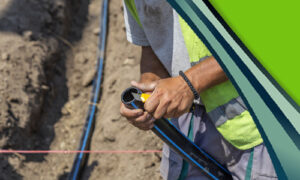
How Does Water Line Get Installed?
If you’re planning to install a water line, it’s essential to understand the process involved to ensure a smooth and successful project. Installing a water line is a complex process that requires careful planning and execution. Here are the typical steps involved:
1. Obtaining necessary permits
Before any work can begin, obtaining necessary permits from your local municipality is essential. It typically involves submitting an application, providing project details and site plans, and paying applicable fees.
2. Shutting off the water supply
Before beginning any work, turning off the water supply is essential to prevent water from flowing through the line. It will avoid any accidental flooding or water damage during the installation process.
3. Excavating the area
To install the water line, the contractor must excavate the area to expose the ground and make space for the new line. It can involve using heavy machinery, such as excavators or backhoes, to dig the trench for the water line.
4. Installing the water line
The water line installation follows the project’s specifications, and the installer fits any necessary valves and fittings. The type of water line material used, such as PVC or copper, will depend on the project’s specifications and requirements.
5. Testing the water line
Once the installation is complete, the water line undergoes testing to verify its proper functioning and check for potential leaks. It typically involves pressurizing the line and checking for any leaks or drops in pressure.
6. Backfilling and cleanup
After installing and testing the water line, the installer backfills the area with soil and performs the necessary cleanup. Finally, the installer levels the excavation site and returns any displaced vegetation or landscaping to its original location.

How Much Does it Cost for a Water Line Repair?
If a water line is damaged or not functioning correctly, repairing it may be a more economical solution than replacing it. Here are the typical costs involved in improving a water line:
1. Material costs
It includes the cost of any replacement parts needed for the repair, such as valves, fittings, or sections of the water line. The price may vary depending on the type and quality of materials used.
2. Labor costs
The cost of hiring a professional to repair the water line can vary based on their experience level and complexity. Some repairs may require specialized skills or equipment, increasing the labor cost.
3. Additional expenses
Excavation, landscaping, and any necessary permits may incur additional expenses depending on the location and condition of the ground. After completing the repair work, the restoration of the area may require landscaping, and accessing the damaged portion of the water line may be essential by digging a hole. Before performing a repair on the water line, obtaining permits from the local government may be necessary. These permits may come with fees or other costs.
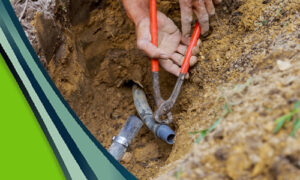
What to Expect During Water Line Installation or Repair?
During a water line installation or repair, there are a few things that you can expect:
1. Timeline
Depending on the length of the line and the intricacy of the work, installing or repairing a water line might take several days to several weeks. Your contractor should provide an estimated timeline for the project, but unforeseen circumstances, such as weather or unexpected issues during the installation or repair process, may cause delays.
2. Noise and disruption
Water line installations and repairs can be noisy and disruptive, especially if excavation is required. The workers may use heavy machinery to excavate the area and install the new water line, which can cause loud noises and vibrations that you may feel throughout your property. Additionally, during the installation or repair process, the professionals performing the work may restrict access to certain areas of your property, which could disrupt your daily routine.
3. Necessary preparations
Before the installation or repair begins, you may need to make necessary preparations to ensure the process goes smoothly. For easier access, you may need to move any furniture or landscaping around the area where the water line will be installed or repaired, for example. It is essential to keep dogs and children away from the installation or repair area throughout the installation or repair procedure.

Save Money on Water Line Installation and Repair!
In summary, while water line installation and repair can be intimidating, it is crucial for maintaining the functionality and safety of your water supply. By understanding the costs involved, preparing for potential disruptions, and hiring a qualified contractor, you can ensure a successful installation or repair that provides reliable access to clean water for years.
Lastly, investing in the proper installation or repair of your water line is a proactive step towards safeguarding the health and well-being of your home or business. Feel free to take the necessary measures to ensure your water supply remains safe and reliable.
